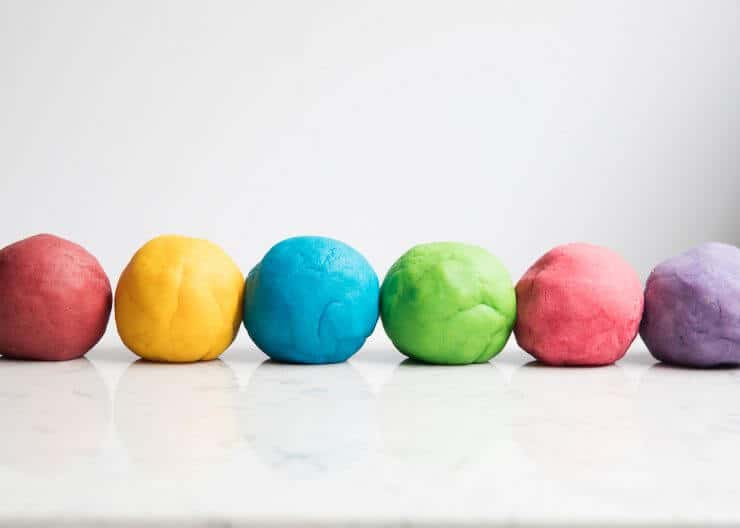“`html
The Ultimate Soft Playdough Recipe Guide for Parents | Create and Play
Hello amazing parents and caretakers! Are you ready for a burst of colorful fun that’s guaranteed to bring out the happy giggles and spark creativity in your little ones? Today, I’m beyond thrilled to share a soft playdough recipe that’s been a total game-changer in my household, and I’m pretty sure it will be in yours too!
Why Homemade Soft Playdough?
Before we dive into the delightful squish and squash of our fab playdough recipe, let’s take a moment to appreciate why homemade equals awesome. Besides being a mega wallet-friendly alternative to the store-bought stuff, making your own playdough is:
- Safer: Say goodbye to that store-bought dough full of names you can’t pronounce. With ingredients from your kitchen, you’ll have full control of what your little munchkins are getting their hands into.
- Customizable: Think of it like being the artist of your kiddo’s play palette – add colors, glitter, and even natural scents to make things extra snazzy!
- Soft and Pliable: This recipe ensures the dough is a breeze for tiny fingers to mold, which is super important for their developing muscles and coordination.
- Endless Fun: From creating mythical creatures to learning numbers and letters, playdough time is both educational and a blast.
Let’s Get Rolling: Your Ultimate Soft Playdough Recipe
Alrighty, here’s the magical concoction for creating the most wonderful playdough you’ve ever touched. Hint: It’s easy, quick, and requires NO cooking. Yes, you heard right – no stovetops or hot plates needed!
Ingredients:
- 2 cups of plain flour (all-purpose flour)
- 2 tablespoons of vegetable oil (baby oil and coconut oil work too)
- 1/2 cup of salt
- 2 tablespoons of cream of tartar (for improved elasticity)
- Up to 1.5 cups of boiling water (added gradually)
- Food coloring (as many colors as you wish!) or natural dyes like beetroot powder, turmeric, and spinach juice for a more natural approach
- Optional: Fine glitter, for that magical sparkle
- Optional: Essential oils for lovely scents (be sure they’re safe for your child’s age)
Instructions:
- Begin by mixing the flour, salt, cream of tartar, and oil in a large mixing bowl.
- Add the boiling water carefully to the dry ingredients, a little bit at a time, stirring continuously until the mixture binds together into a doughy ball.
- If you’re going for color, now is the time! Divide the dough into equal parts, press a dimple into the center of each ball and drop your choice of food coloring or natural dye into the hole. Then fold the dough over the dye and knead it in, wearing gloves to avoid stained hands.
- Should the dough feel a bit sticky, add a touch more flour until it reaches a smooth consistency. If it’s too dry or crumbly, add a teeny bit more water to get it just right.
- If you’re including glitter or a drop of essential oil, fold these in until they’re just evenly distributed throughout the dough.
- Voilà! You’ve now got homemade playdough that’s softer than a cloud and ready for play!
Don’t worry. If you’ve encountered any hiccups along the way, I’ve got some troubleshooting tips coming right up. But first, let’s talk storage, because we want this playtime favourite to last, don’t we?
“`

“`html
Five Things Parents Should Know Before Making Soft Playdough
Getting ready to knead your way into playdough paradise? Keep these five helpful tips in mind to ensure a smooth-sailing, dough-making adventure:
- Prep Your Workspace: Playdough-making can get a little messy, so it’s wise to set up on a surface that’s easy to clean. Cover tabletops with wax paper or a silicone mat to simplify your post-playdough cleanup.
- Ingredient Quality: Though we’re not baking a cake, the quality of your ingredients matters, especially when it comes to food coloring. Opt for high-quality, non-toxic food coloring for bright, vibrant dough that’s safe for little hands.
- Allergy Check: Before you start, ensure none of the ingredients will cause allergic reactions in your children. Flour and oils can be substituted with gluten-free or hypoallergenic options if necessary.
- Water Temperature: Our no-cook recipe calls for boiling water, which can be quite dangerous. Always handle it with care and keep little ones at a safe distance during this step.
- Patient Kneading: Achieving that perfect dough consistency can take a little bit of elbow grease. Encourage older kids to help with kneading—it’s a great way for them to build hand strength and engage in the playdough creation process!
Storage Tips for Homemade Playdough
Now that your homemade playdough is ready for action, here’s how to keep it fresh and pliable for future play sessions:
- Airtight Containers: Storing the dough in airtight containers or zip-lock bags is crucial to prevent it from drying out.
- Keep it Cool: Pop that playdough in the fridge to help it last longer. Just let it return to room temperature before the kiddos dive in for more doughy fun.
- Regular Checks: Every now and then, check the playdough for signs of dryness or mold. If it’s time to say goodbye, don’t fret – whipping up another batch is a cinch!
- Portion Control: Only take out as much playdough as you’ll use in one playing session to limit exposure to air.
Making your own soft playdough is a rewarding and thrilling experience that offers endless hours of creativity and learning for your children. With this ultimate guide, you’re well on your way to becoming the coolest playdough chef in town. Happy creating and playing!
“`
See more great Things to Do with Kids in New Zealand here. For more information see here
Disclaimer
The articles available via our website provide general information only and we strongly urge readers to exercise caution and conduct their own thorough research and fact-checking. The information presented should not be taken as absolute truth, and, to the maximum extent permitted by law, we will not be held liable for any inaccuracies or errors in the content. It is essential for individuals to independently verify and validate the information before making any decisions or taking any actions based on the articles.




